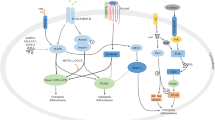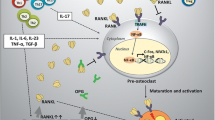Abstract
Osteoporosis is a debilitating disease that affects millions of people worldwide. Current osteoporosis treatments are predominantly bone-resorbing drugs that are associated with several side effects. The use of stem cells for tissue regeneration has raised great hope in various fields of medicine, including musculoskeletal disorders. Stem cell therapy for osteoporosis could potentially reduce the susceptibility of fractures and augment lost mineral density by either increasing the numbers or restoring the function of resident stem cells that can proliferate and differentiate into bone-forming cells. Such osteoporosis therapies can be carried out by exogenous introduction of mesenchymal stem cells (MSCs), typically procured from bone marrow, adipose, and umbilical cord blood tissues or through treatments with drugs or small molecules that recruit endogenous stem cells to osteoporotic sites. The main hurdle with cell-based osteoporosis therapy is the uncertainty of stem cell fate and biodistribution following cell transplantation. Therefore, future advancements will focus on long-term engraftment and differentiation of stem cells at desired bone sites for tangible clinical outcome.

Similar content being viewed by others
References
Papers of particular interest, published recently, have been highlighted as: • Of importance •• Of major importance
Cooper C, Campion G, Melton III LJ. Hip fractures in the elderly: a world-wide projection. Osteoporos Int. 1992;2:285–9.
Foundation, NO. Debunking the Myths. 2013. Available at: http://www.nof.org/articles/4.
Lien CY et al. Restoration of bone mass and strength in glucocorticoid-treated mice by systemic transplantation of CXCR4 and cbfa-1 co-expressing mesenchymal stem cells. J Bone Miner Res. 2009;24:837–48.
Martin KE et al. Analysis of the comparative effectiveness of 3 oral bisphosphonates in a large managed care organization: adherence, fracture rates, and all-cause cost. J Manag Care Pharm. 2011;17:596–609.
Liu Y, et al. Therapeutic application of mesenchymal stem cells in bone and joint diseases. Clin Exp Med. 2012.
Sandhu SK, Hampson G. The pathogenesis, diagnosis, investigation and management of osteoporosis. J Clin Pathol. 2011;64:1042–50.
Lane NE. Epidemiology, etiology, and diagnosis of osteoporosis. Am J Obstet Gynecol. 2006;194(2 Suppl):S3–S11.
Lippuner K. The future of osteoporosis treatment - a research update. Swiss Med Wkly. 2012;142:w13624.
Chen XD et al. Extracellular matrix made by bone marrow cells facilitates expansion of marrow-derived mesenchymal progenitor cells and prevents their differentiation into osteoblasts. J Bone Miner Res. 2007;22:1943–56.
Chen XD et al. Age-related osteoporosis in biglycan-deficient mice is related to defects in bone marrow stromal cells. J Bone Miner Res. 2002;17:331–40.
Katsara O et al. Effects of donor age, gender, and in vitro cellular aging on the phenotypic, functional, and molecular characteristics of mouse bone marrow-derived mesenchymal stem cells. Stem Cells Dev. 2011;20:1549–61.
Bonyadi M et al. Mesenchymal progenitor self-renewal deficiency leads to age-dependent osteoporosis in Sca-1/Ly-6A null mice. Proc Natl Acad Sci U S A. 2003;100:5840–5.
Weinstein RS, Roberson PK, Manolagas SC. Giant osteoclast formation and long-term oral bisphosphonate therapy. N Engl J Med. 2009;360:53–62.
Khan AA et al. Bisphosphonate associated osteonecrosis of the jaw. J Rheumatol. 2009;36:478–90.
Lo JC et al. Prevalence of osteonecrosis of the jaw in patients with oral bisphosphonate exposure. J Oral Maxillofac Surg. 2010;68:243–53.
Saleh A et al. Bisphosphonate therapy and atypical fractures. Orthop Clin North Am. 2013;44:137–51.
Nieves JW, Cosman F. Atypical subtrochanteric and femoral shaft fractures and possible association with bisphosphonates. Curr Osteoporos Rep. 2010;8:34–9.
Cummings SR et al. Denosumab for prevention of fractures in postmenopausal women with osteoporosis. N Engl J Med. 2009;361:756–65.
Rizzoli R, Yasothan U, Kirkpatrick P. Denosumab. Nat Rev Drug Discov. 2010;9:591–2.
Barrett-Connor E et al. Effects of raloxifene on cardiovascular events and breast cancer in postmenopausal women. N Engl J Med. 2006;355:125–37.
Reginster JY, Pelousse F, Bruyere O. Safety concerns with the long-term management of osteoporosis. Expert Opin Drug Saf. 2013;12:507–22.
Anastasilakis AD et al. Long-term treatment of osteoporosis: safety and efficacy appraisal of denosumab. Ther Clin Risk Manag. 2012;8:295–306.
Canalis E, Giustina A, Bilezikian JP. Mechanisms of anabolic therapies for osteoporosis. N Engl J Med. 2007;357:905–16.
Black DM et al. One year of alendronate after one year of parathyroid hormone (1–84) for osteoporosis. N Engl J Med. 2005;353:555–65.
Yao W, et al. Reversing bone loss by directing mesenchymal stem cells to the bone. Stem Cells. 2013. Important article describing a novel, small molecule to direct MSCs to bone to augment the rate of bone formation for osteoporosis treatment.
Steinert AF et al. Concise review: the clinical application of mesenchymal stem cells for musculoskeletal regeneration: current status and perspectives. Stem Cells Transl Med. 2012;1:237–47. A concise, yet detailed review on clinical applications of MSCs in the musculoskeletal system..
Trounson A et al. Clinical trials for stem cell therapies. BMC Med. 2011;9:52.
Sethe S, Scutt A, Stolzing A. Aging of mesenchymal stem cells. Ageing Res Rev. 2006;5:91–116.
Brack AS, Rando TA. Intrinsic changes and extrinsic influences of myogenic stem cell function during aging. Stem Cell Rev. 2007;3:226–37.
Muschler GF et al. Age- and gender-related changes in the cellularity of human bone marrow and the prevalence of osteoblastic progenitors. J Orthop Res. 2001;19:117–25.
Wang Z et al. Efficacy of bone marrow-derived stem cells in strengthening osteoporotic bone in a rabbit model. Tissue Eng. 2006;12:1753–61.
Ocarino Nde M et al. Intra-bone marrow injection of mesenchymal stem cells improves the femur bone mass of osteoporotic female rats. Connect Tissue Res. 2010;51:426–33.
Tang Y et al. Combination of bone tissue engineering and BMP-2 gene transfection promotes bone healing in osteoporotic rats. Cell Biol Int. 2008;32:1150–7.
Hsiao FS et al. Isolation of therapeutically functional mouse bone marrow mesenchymal stem cells within 3 h by an effective single-step plastic-adherent method. Cell Prolif. 2010;43:235–48.
Kim D et al. Retrovirus-mediated gene transfer of receptor activator of nuclear factor-kappaB-Fc prevents bone loss in ovariectomized mice. Stem Cells. 2006;24:1798–805.
Cho SW et al. Transplantation of mesenchymal stem cells overexpressing RANK-Fc or CXCR4 prevents bone loss in ovariectomized mice. Mol Ther. 2009;17:1979–87.
Levi B, Longaker MT. Concise review: adipose-derived stromal cells for skeletal regenerative medicine. Stem Cells. 2011;29:576–82. This article highlights the emerging role of adipose derived stem cells in skeletal tissue engineering..
Liu HY et al. The effect of diminished osteogenic signals on reduced osteoporosis recovery in aged mice and the potential therapeutic use of adipose-derived stem cells. Biomaterials. 2012;33:6105–12.
Chen HT et al. Proliferation and differentiation potential of human adipose-derived mesenchymal stem cells isolated from elderly patients with osteoporotic fractures. J Cell Mol Med. 2012;16:582–93.
Cho SW et al. Human adipose tissue-derived stromal cell therapy prevents bone loss in ovariectomized nude mouse. Tissue Eng Part A. 2012;18:1067–78.
Rodriguez JP et al. Abnormal osteogenesis in osteoporotic patients is reflected by altered mesenchymal stem cells dynamics. J Cell Biochem. 1999;75:414–23.
Rodriguez JP et al. Involvement of adipogenic potential of human bone marrow mesenchymal stem cells (MSCs) in osteoporosis. Curr Stem Cell Res Ther. 2008;3:208–18.
You L et al. Suppression of zinc finger protein 467 alleviates osteoporosis through promoting differentiation of adipose derived stem cells to osteoblasts. J Transl Med. 2012;10:11.
Ilic D, Miere C, Lazic E. Umbilical cord blood stem cells: clinical trials in non-hematological disorders. Br Med Bull. 2012;102:43–57. This article provides detailed information regarding umbilical cord blood MSCs and their use in relevant clinical trials..
Rebelatto CK et al. Dissimilar differentiation of mesenchymal stem cells from bone marrow, umbilical cord blood, and adipose tissue. Exp Biol Med. 2008;233:901–13.
Guillot PV et al. Comparative osteogenic transcription profiling of various fetal and adult mesenchymal stem cell sources. Differentiation. 2008;76:946–57.
An JH et al. Transplantation of human umbilical cord blood-derived mesenchymal stem cells or their conditioned medium prevents bone loss in ovariectomized nude mice. Tissue Eng Part A. 2013;19:685–96.
Aggarwal R et al. Human umbilical cord blood-derived CD34+ cells reverse osteoporosis in NOD/SCID mice by altering osteoblastic and osteoclastic activities. PLoS One. 2012;7:e39365.
Nishida S et al. Increased bone formation by intermittent parathyroid hormone administration is due to the stimulation of proliferation and differentiation of osteoprogenitor cells in bone marrow. Bone. 1994;15:717–23.
Davies J, Chambers TJ. Parathyroid hormone activates adhesion in bone marrow stromal precursor cells. J Endocrinol. 2004;180:505–13.
Mukherjee S et al. Pharmacologic targeting of a stem/progenitor population in vivo is associated with enhanced bone regeneration in mice. J Clin Invest. 2008;118:491–504.
Guan M et al. Directing mesenchymal stem cells to bone to augment bone formation and increase bone mass. Nat Med. 2012;18:456–62. Important article describing a novel, small molecule to direct MSCs to bone to augment the rate of bone formation for osteoporosis treatment..
Lopez FJ. New approaches to the treatment of osteoporosis. Curr Opin Chem Biol. 2000;4:383–93.
Petersson M et al. Oxytocin stimulates proliferation of human osteoblast-like cells. Peptides. 2002;23:1121–6.
Elabd SK et al. Possible neuroendocrine role for oxytocin in bone remodeling. Endocr Regul. 2007;41:131–41.
Elabd C et al. Oxytocin controls differentiation of human mesenchymal stem cells and reverses osteoporosis. Stem Cells. 2008;26:2399–407.
Meyerrose TE et al. In vivo distribution of human adipose-derived mesenchymal stem cells in novel xenotransplantation models. Stem Cells. 2007;25:220–7.
Granero-Molto F et al. Regenerative effects of transplanted mesenchymal stem cells in fracture healing. Stem Cells. 2009;27:1887–98.
Gutwald R et al. Mesenchymal stem cells and inorganic bovine bone mineral in sinus augmentation: comparison with augmentation by autologous bone in adult sheep. Br J Oral Maxillofac Surg. 2010;48:285–90.
Vertenten G et al. Evaluation of an injectable, photopolymerizable, and three-dimensional scaffold based on methacrylate-endcapped poly(D, L-lactide-co-epsilon-caprolactone) combined with autologous mesenchymal stem cells in a goat tibial unicortical defect model. Tissue Eng Part A. 2009;15:1501–11.
Halleux C et al. Multi-lineage potential of human mesenchymal stem cells following clonal expansion. J Musculoskelet Neuronal Interact. 2001;2:71–6.
Longobardi L et al. Subcellular localization of IRS-1 in IGF-I-mediated chondrogenic proliferation, differentiation and hypertrophy of bone marrow mesenchymal stem cells. Growth Factors. 2009;27:309–20.
Ma L et al. Cryopreserved dental pulp tissues of exfoliated deciduous teeth is a feasible stem cell resource for regenerative medicine. PLoS One. 2012;7:e51777.
Vishwanath VR et al. Differentiation of isolated and characterized human dental pulp stem cells and stem cells from human exfoliated deciduous teeth: An in vitro study. J Conserv Dent. 2013;16:423–8.
Alkaisi A et al. Transplantation of human dental pulp stem cells: enhance bone consolidation in mandibular distraction osteogenesis. J Oral Maxillofac Surg. 2013;71:1758. e1–13.
Acknowledgments
D Gazit acknowledges funding support for the California Institute for Regenerative Medicine (grant # TR2-01780).
Conflict of Interest
B. Antebi declares that he has no conflicts of interest. G. Pelled declares that he has no conflicts of interest. D. Gazit declares that he has no conflicts of interest.
Human and Animal Rights and Informed Consent
This article does not contain or cite any studies with human or animal subjects performed by the authors.
Author information
Authors and Affiliations
Corresponding author
Rights and permissions
About this article
Cite this article
Antebi, B., Pelled, G. & Gazit, D. Stem Cell Therapy for Osteoporosis. Curr Osteoporos Rep 12, 41–47 (2014). https://doi.org/10.1007/s11914-013-0184-x
Published:
Issue Date:
DOI: https://doi.org/10.1007/s11914-013-0184-x




